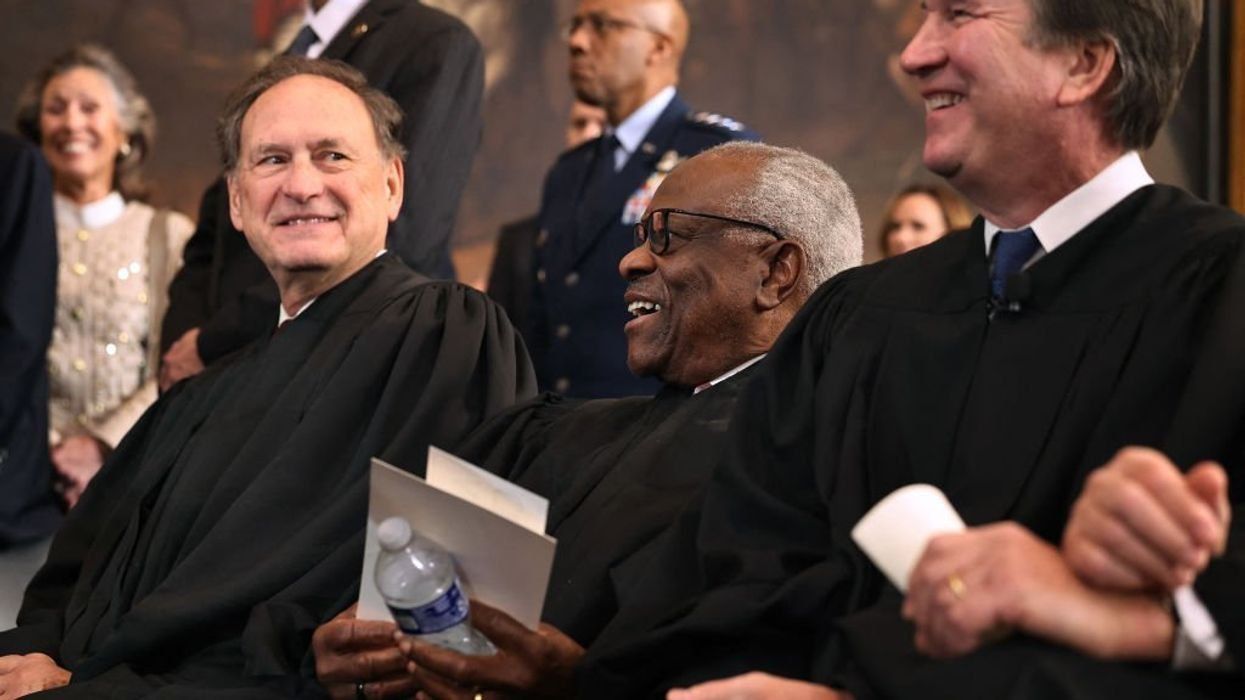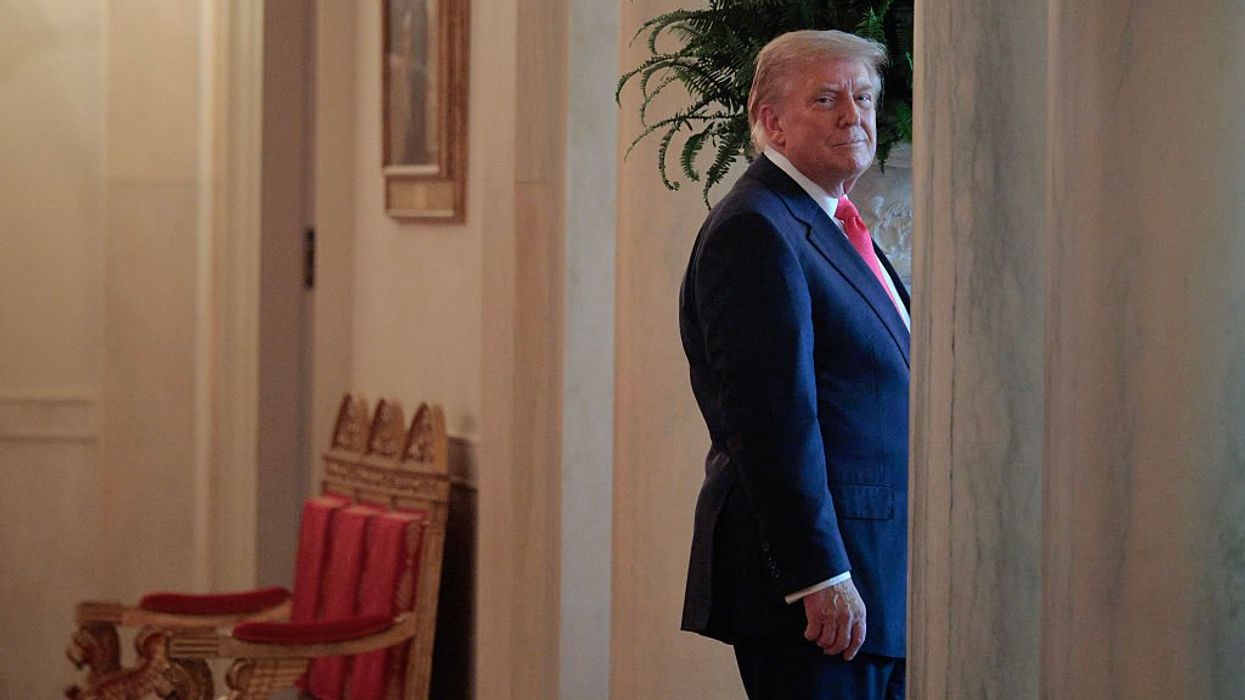Israeli police nabbed suspects who they believe “plundered” at least 11 burial boxes dating back to the time of Jesus, the Israel Antiquities Authority announced Monday.
The 2,000-year-old burial boxes, known as ossuaries, are believed to have been stolen from a “magnificent ancient burial cave” in the Jerusalem area, the Antiquities Authority said.
In a midnight raid Friday, Israeli police and the Antiquities Authority caught the suspects "red-handed" with ancient coffins, which were like those used by the Jewish population in Jerusalem during the Second Temple period 2,000 years ago, officials said.
 One of the 11 ancient coffins containing Jewish bones from the Second Temple period is seen after it was recovered from suspected thieves, on March 31, 2014 at the Rockefeller Museum in Jerusalem. Police and antiquities inspectors have arrested a gang accused of looting the ancient Jewish ossuaries from a cave in the Jerusalem area, the Israel Antiquities Authority said. (AFP/Getty Images/Gali Tibbon)
One of the 11 ancient coffins containing Jewish bones from the Second Temple period is seen after it was recovered from suspected thieves, on March 31, 2014 at the Rockefeller Museum in Jerusalem. Police and antiquities inspectors have arrested a gang accused of looting the ancient Jewish ossuaries from a cave in the Jerusalem area, the Israel Antiquities Authority said. (AFP/Getty Images/Gali Tibbon)
“Some of the ossuaries still contained the skeletal remains of the deceased,” the Antiquities Authority said.
It said the suspects “were caught red-handed … when they were closing a deal to sell the ossuaries” north of Jerusalem.
“The inspectors of the IAA Unit for the Prevention of Antiquities Robbery immediately recognized that these are special ancient ossuaries of unique significance,” the Antiquities Authority said.
The Antiquities Authority said the Jewish population of the area used the stone boxes for burial during the Second Temple period which spanned from roughly 515 B.C. to A.D. 70.
 The boxes are believed to contain remains of noblemen who lived in Jerusalem during the Second Temple period (AFP/Getty Images/Gali Tibbon)
The boxes are believed to contain remains of noblemen who lived in Jerusalem during the Second Temple period (AFP/Getty Images/Gali Tibbon)
“The ossuaries are decorated with typical Jewish symbols, among them the lily flower, the six-petal rosette and other symbols,” the Antiquities Authority said. “The decorations adorning the ossuaries were a major element of the Jewish art of the period.”
The boxes are believed to contain the remnants of two noblemen. On the walls of the boxes are shallow engravings stating the names of the deceased, “Ralfin”and “Yo‘azar,” both written in the Hebrew script characteristic of the period.
 Photo: Israel Antiquities Authority Unit for the Prevention of Antiquities Robbery
Photo: Israel Antiquities Authority Unit for the Prevention of Antiquities Robbery
Eitan Klein, deputy director of the Unit for the Prevention of Antiquities Robbery, who examined the ossuaries, said “these are singular finds. The inscriptions on the ossuaries provide us with additional characters and names from amongst the Jewish population in the Second Temple period, and the motifs adorning the ossuaries will supplement our knowledge with new information about the world of Jewish art in this period.”
“There is no doubt that the ossuaries were recently looted from a magnificent burial cave in Jerusalem,” Klein said.
The Associated Press explained that it was a common Jewish practice during the time to lay out the deceased in a cave for a year, after which their bones were gathered and placed in special boxes.
"It's kind of like where the deceased go to retire," Stephen Pfann, president of the University of the Holy Land, told the AP.
"It was an expense to cut a tomb at all," said Pfann. "It definitely took a certain amount of wealth." Klein added that those kind of boxes were used to hold the remains of dignitaries such as rabbis, businessmen and aristocrats.
Israel Police spokesman Micky Rosenfeld told the AP that the attempt to handover the ossuaries involved an Israeli and a Palestinian seller trying to make a sale to an Israeli customer.
Antiquities found in Israel are considered to be property of the state, and their theft is punishable by up to five years imprisonment.

 One of the 11 ancient coffins containing Jewish bones from the Second Temple period is seen after it was recovered from suspected thieves, on March 31, 2014 at the Rockefeller Museum in Jerusalem. Police and antiquities inspectors have arrested a gang accused of looting the ancient Jewish ossuaries from a cave in the Jerusalem area, the Israel Antiquities Authority said. (AFP/Getty Images/Gali Tibbon)
One of the 11 ancient coffins containing Jewish bones from the Second Temple period is seen after it was recovered from suspected thieves, on March 31, 2014 at the Rockefeller Museum in Jerusalem. Police and antiquities inspectors have arrested a gang accused of looting the ancient Jewish ossuaries from a cave in the Jerusalem area, the Israel Antiquities Authority said. (AFP/Getty Images/Gali Tibbon)





